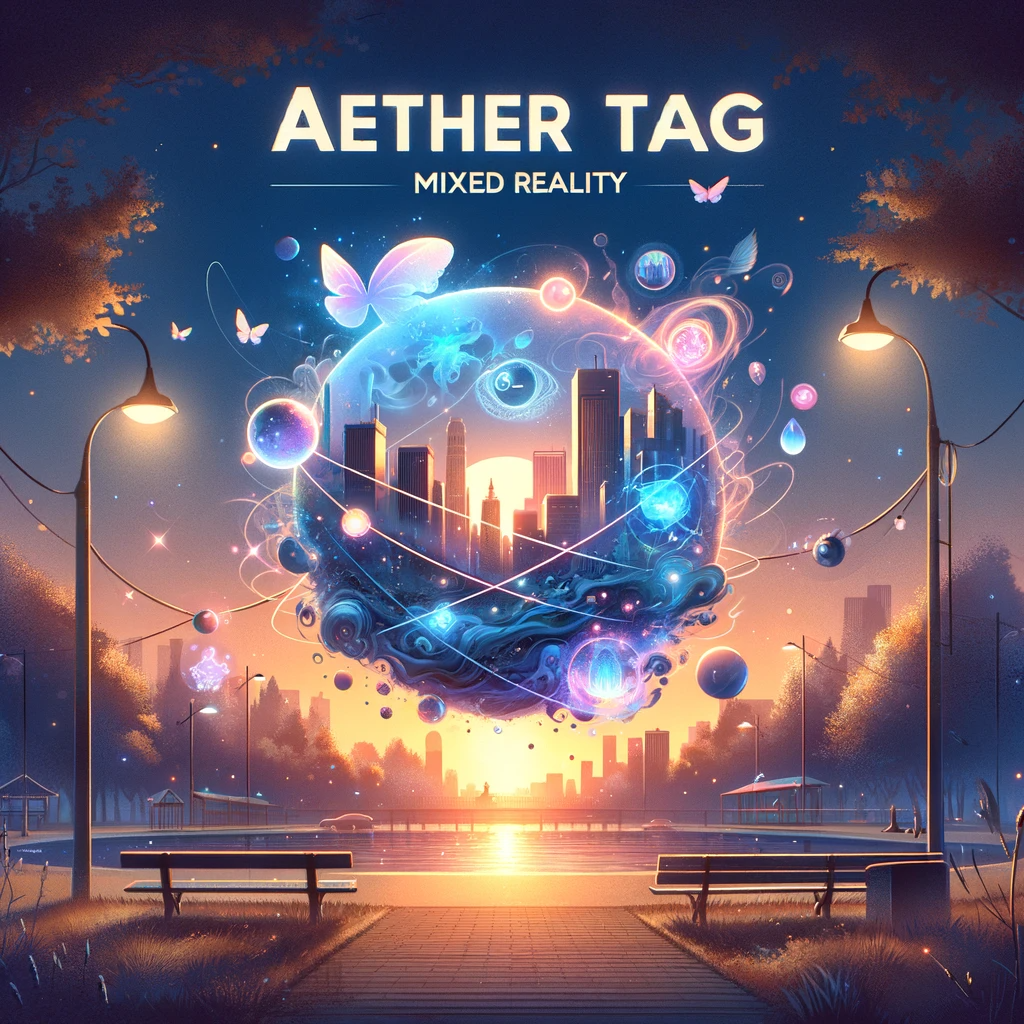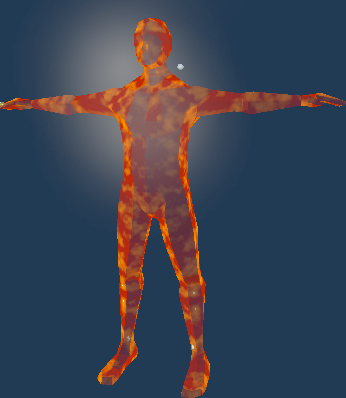I'm Sam, the tech artist of the VR/AR, mixed reality game Aether Tag. With a background in games and graphics programming, I brought a uniique blend of technical expertise and artistic creativity to the project
Aethertag is a VR/AR first-person shooter with a twist. Using passthrough technology, enemies materialize in the player's real-world surroundings. The game employs an elemental magic system (fire, water, and grass) where players must strategically choose their attacks to defeat foes. Aethertag's mystical ambiance, reflected in its art style, centers on non-violence; vanquished enemies transform into graceful butterflies, adding a touch of tranquility to the immersive experience
Given rapid advanement in AR and VR technology, camera passthrough in VR headsets will soon become the standard. Therefore, the need for combining video games with augmented reality technology will soon become industry standard. Developing a game for the Meta Quest 3, harnessing the power of camera passthrough, creates a perfect challenge and opportunity to showcase transformative capabilities augmented reality provides to VR games, and gives new meaning to the term immersive gaming.
User Journey
As a video game and a mixed reality program, Aether Tag’s user experience was incredibly important to us, keeping the player engaged through every moment of the immersive journey was our foremost priority."
The moment the user runs the game, they should be prompted to scan their environment using their headsets, in the same way they would normally for calibration
A Title/Menu screen appears infront of the player, allowing them to start the game, change settings, and wands/spells and with further development and updates, skins.
With an intuitive control scheme, players would use their right hand to contol their wand, casting spells with the trigger button, while defending themselves with a shield in their left hand, along with moving to dodge incomming projectiles.
Settling on 3 elements, much like a game of rock, paper, scissors, player would need to chose the correct wand element to cast its respective spell at an oposing typed enemy, of which, on defeat, would shatter into butterflies
Sarah, represents the exact target audience for the game. Sarah's preferences, interests, and expectations became our guiding light throughout the development process
Aether Tag: My impact on the user experience
As tech artist on the project, every graphical element recieved my attention, ensuring visual exellence, conformity with the games style and seamless integration into the game world. Whilst i played a part in every asset, my core focus was on a mix of materials and UI inplementation. Due to the recent release of the technology, an absence of ready-made tools for shader development was apparent and consequently each shader/material was crafted through code, each taking camera passthrough and depth information into account.
Maintaining a close collaboration with our UI/UX designer, I integrated their UI design into the game, providing valuable feedback ensuring the UI was optimised for the VR/AR mixed reality displays, addressing critical considerations such as anchoring windows, menues and HUDs to enhance user experience.
Production Timeline
Game Design Process: Generating initial ideas of the concept of the game project as well as project alteration and scoping
Exploration Of Discover Package: The discover package on unity provided us with an example of base uses of mixed reality, giving us an idea of implementations of features for mixed reality and the Quest 3
Basic Functionality; Implementation of controllers and core game functionality, shooting, swapping weapons, models were created for weapons and shield
Project Demo Due
Added Pass through enabled shaders and materials to wands, player character and projectiles; Started on enemy system
Enemy systems were imported from a previous game worked on as they were functionally the same; Particle effects worked on + GUI,
Materials updated, particle effects updated, bug fixes, UI Cut for initial release; enemy deaths fixed (mostly), QA work.
Version 1.0 Due
UI Reimplementation using world space; Changes to materials, animations, particle effects and shaders;
Current Version
Aether Tag - Version 1.0
A Brief Reflection
While the initial goals of our project had to evolve to maintain a manageable scope within the constraints of time, experience level, and the challenges of working with experimental APIs, I am proud to say that the changes we implemented were executed successfully. We managed to create a captivating mixed-reality game that effectively merged VR with AR, demonstrating the immense potential of this combination
Looking forward, armed with a deeper understanding of the systems we utilized, I am confident that further development could lead to the creation of a fully-fledged game, free of bugs and enriched with additional features. Such a game would be one I would be proud to see on Oculus’ platforms, showing the journey of growth and accomplishment we've embarked upon
The most challenging aspect of the development process undoubtedly stemmed from the transition to working within a substantially larger team, which comprised a total of 7 members. However, as we approached the deadline, our team rallied together to overcome these obstacles. While my primary role within the team was that of a Tech Artist, responsible for unifying the diverse artistic assets and establishing a consistent art style, my background in game programming allowed me to contribute as a supplementary gameplay programmer. This dual role provided a fresh perspective on problem-solving and expedited the resolution of certain issues. However, working with the Experimental APIs brought its share of challenges for all programmers, specifically regarding its lacking documentation. This would extended to the development of shaders and materials for the game. While some shaders were provided in the discovery repository, they were basic and did not align with the aesthetic we aimed for. As time became increasingly scarce, I found myself grappling with the intricacies of deciphering and modifying hundreds of lines of code within these shaders, striving to understand their nuances and eventually craft new, whimsically coloured, and animated shaders that were ideal for our project.
In addition to the challenges we encountered, our team faced hardware limitations that significantly impacted our development process. I found myself in a unique position as the sole team member capable of running the software during critical demonstration and public testing times. This responsibility also meant that the pressure of implementing hotfixes fell squarely on my shoulders when the project unexpectedly broke just two hours before its showcase. With the core gameplay programmer unavailable at that crucial moment, I had to persevere and swiftly address the issues, all while a team of onlookers expressed their bewilderment and urgency in resolving the situation
When it comes to workload distribution, our team of 7 members organized into distinct roles: 3 programmers, 2 artists, a UX/Game designer, and 2 'other' roles. Specifically, Joshua Davies shouldered the bulk of gameplay programming in Unity, and I provided assistance wherever needed, closely coordinating with the artists. Our 3D artist, Vincente Didier Edwards, took on the additional role of our presentation specialist, ensuring that our progress presentations were consistently up to date. Meanwhile, our UI artist, Wenqu Tang, initially had an ambitious scope of work but still engaged with the team by contributing small pieces of VFX within the game and enhancing her design contributions, which have now been successfully integrated. While UX/Game designers typically play a pivotal role in substantial projects, Zhou Huiying's contributions were minimal in this case. This was because we collaboratively developed the concept as a team, and our programmers took on UX responsibilities as they became more familiar with the system.




